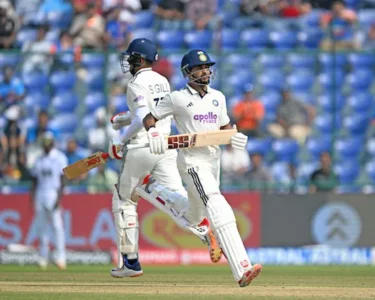The global tennis calendar is once again under the microscope as a surge in player injuries and growing criticism from top athletes has raised serious questions about the sport’s scheduling demands. From Grand Slams to ATP and WTA tours, players are voicing concerns over the physical toll of an increasingly packed season. The debate is intensifying, highlighting the need to balance competitive excitement with athlete well-being.
Rising Injury Concerns
In the past year, professional tennis has witnessed a marked increase in withdrawals due to injuries, ranging from shoulder and wrist issues to knee and hamstring problems. Top-ranked players, including several Grand Slam champions, have been forced to skip tournaments to recover, disrupting the competitive landscape.
Medical experts point to the cumulative effects of long matches, back-to-back tournaments, and limited off-season recovery as key contributors. Unlike team sports, tennis players often endure intense individual workloads without adequate recovery, placing significant strain on the body.
The increase in injuries not only affects players’ careers but also impacts tournament organizers, sponsors, and fans who anticipate seeing top athletes in action.
Player Criticism and Calls for Change
Many players have publicly criticized the current schedule for being too demanding, with insufficient rest periods between events. Veteran athletes argue that a condensed calendar forces them to choose between protecting their health and defending rankings, ultimately affecting performance quality.
For instance, recent post-match interviews and social media statements reveal a common concern: “We want to play at our best, but the schedule doesn’t allow proper recovery.” This growing chorus of voices has prompted tennis governing bodies to re-examine the calendar structure.
The Challenge of a Global Tour
The modern tennis tour spans multiple continents and time zones, from hard courts in North America to clay courts in Europe and grass courts in the UK. While this global reach benefits fans and sponsors, it adds significant travel fatigue and logistical challenges for players.
Back-to-back tournaments across different surfaces increase the risk of overuse injuries. Experts suggest that even minor adjustments to travel schedules or tournament sequencing could substantially reduce physical strain and improve player longevity.
Governing Bodies Respond
Tennis governing bodies, including the ATP, WTA, and ITF, have acknowledged the concerns. Discussions are underway about optimizing tournament spacing, limiting consecutive high-intensity events, and providing more mandatory rest weeks.
Additionally, technology-driven innovations, such as wearable tracking devices, are being explored to monitor player fatigue and prevent injuries. Data from these devices could help shape a calendar that prioritizes both entertainment and athlete safety.
Balancing Tradition and Modern Demands
While there is consensus on the need for reform, the challenge lies in balancing long-standing tournament traditions with modern player welfare. Grand Slams, national opens, and prestigious tour events have historical significance, making changes complex.
Some analysts suggest introducing rotation systems or optional tournaments for top-ranked players, allowing them to maintain performance without compromising health. Others advocate for expanding recovery protocols, including mandatory off-season periods and regulated rest days during tournaments.
Impact on Fans and the Sport
The ongoing debate has implications beyond player health. Fans, sponsors, and broadcasters are all invested in seeing the best athletes perform consistently. Frequent withdrawals or early exits due to injury can diminish audience engagement and affect commercial revenues.
By addressing the scheduling concerns proactively, tennis authorities have an opportunity to enhance player performance, reduce injuries, and preserve the sport’s global appeal.
Conclusion
The tennis schedule is at a critical juncture. With injuries rising and top players vocalizing their struggles, the sport faces pressure to rethink how tournaments are structured. Adjusting schedules, prioritizing recovery, and leveraging technology could safeguard athlete health while maintaining the excitement that fans expect.
As the tennis world looks ahead to upcoming seasons, the question remains: will governing bodies act decisively to ensure a sustainable future for players and the sport, or will the relentless pace continue to take its toll?







